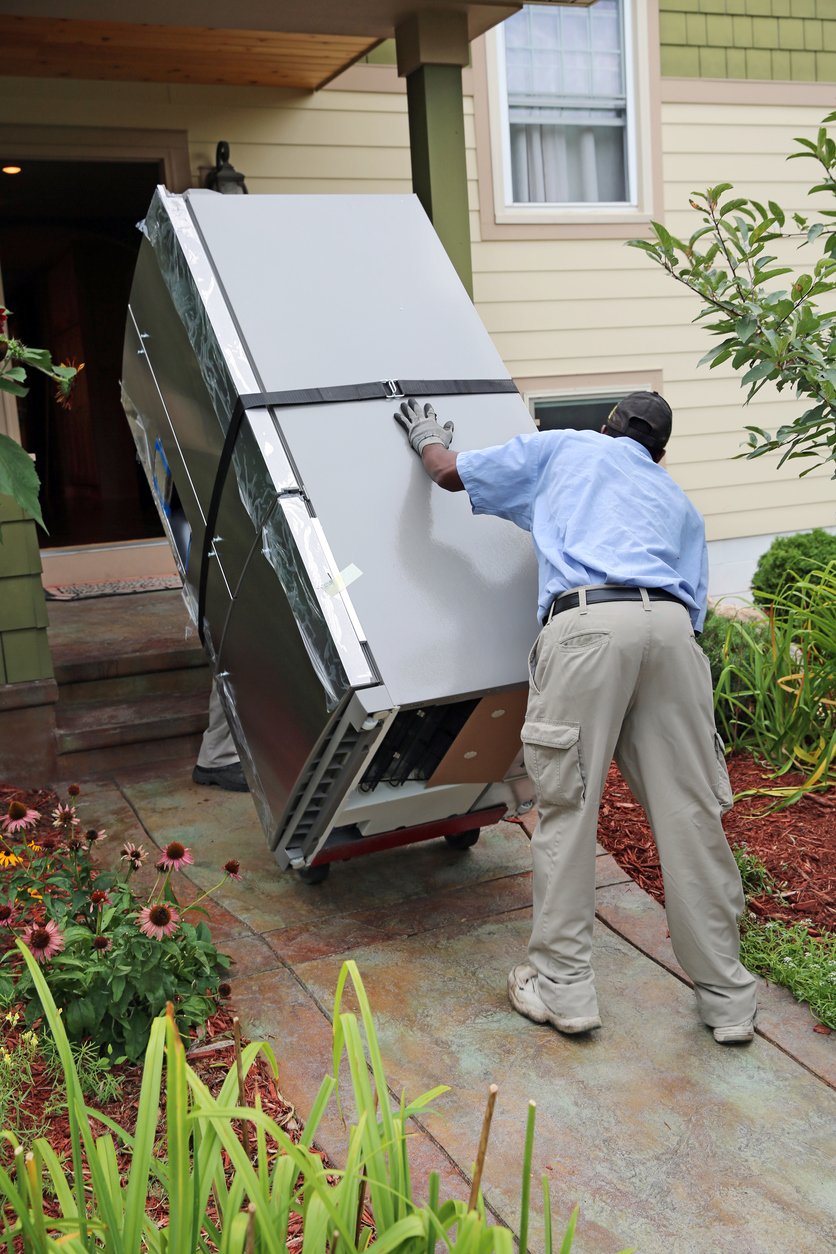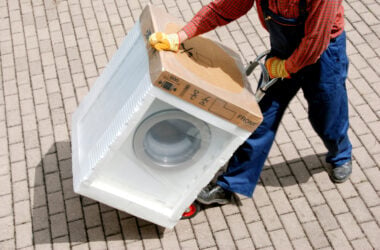The kitchen is one of the most challenging rooms to handle when moving. Before packing, it’s necessary to declutter the home and toss irrelevant things. But packing gets harder when you move onto heavy appliances like your refrigerator. Understanding how to move a refrigerator safely is critical, especially if you’re making a long move.
Why Does the Refrigerator Require Special Attention?
Refrigerators are bulky and costly. If relocated incorrectly, they can leak fluids, harbor mildew, or even damage the floors and walls. There is also the risk of the fridge getting damaged or hurting someone if it tips over.
This guide elaborates on how to move a refrigerator, starting from prepping the appliance to installing it at the new home. Here are the vital steps.
1. Gather Moving Supplies
Moving a refrigerator starts with gathering the right tools and equipment to simplify the job and ensure safety. The following tools and materials should be ready on the relocation day:
- Coolers
- A fridge cleaning solution
- A measuring tape
- Appliance dolly
- Tie-down or ratchet straps
- Bungee cords
- Packing tapes
- Moving blankets
- Floor protection mats
- Loading ramps
- A pickup truck or moving van
Apart from these supplies, it’s essential to have an extra pair of hands. Moving a large appliance like a refrigerator can be overwhelming for one person. If your personal car is too small for the fridge, book a moving van or a pickup truck in advance.
2. Take the Fridge’s Dimensions
When you’re planning how to move a refrigerator, the size of the unit matters. It can be frustrating to discover that the fridge is too large for the doors on the last day. That’s where your measuring tape comes in handy. Follow these quick steps:
- Measure the width and height of the unit.
- Do the same for the doors and passageways in both homes.
- Map out the route, noting obstacles like stairs, corners, and curbs.
- Remove any barriers that can’t accommodate the fridge.
Pro Tip:
Use the dimensions of the refrigerator to estimate the right truck size. If you’re moving a lot of your belongings on the same day, load the refrigerator early on and smaller boxes later.
3. Empty the Refrigerator
The next thing to do before moving a fridge is emptying it of its contents. If you have time before the move, start meal planning around the perishable foods in your fridge. If there are a few items you can’t finish in time, load up a cooler so you can bring the food to your new home.
4. Protect the Floor
A smooth move requires you to know how to move a refrigerator without ruining the floors. Floor protectors such as a furniture slider pad or mat can protect the surface when you’re pushing the fridge away from the wall.
Tilt the appliance a little away from you to let the protection material beneath the front casters. The movers can now slide the fridge without damaging the floor.
5. Remove All Detachable Components
The refrigerator consists of many removable parts that would rock or keep shifting the weight when moved. These include shelves, drawers, ice cube trays, dividers, the ice maker and dispenser, and organizers. Remove any loose components and wrap them with protective towels. Label them as you go to simplify the reassembly of the fridge.
If your refrigerator’s water filter is attached to the back of the fridge, disconnect the filter and pack it separately. If you have an activated charcoal filter, consider replacing it with a fresh one once you finish moving the appliance.
Some shelves and drawers can remain in place, but this depends on the refrigerator design. If the parts are reasonably firm, then securing them in place with tape is okay. There will be less work and fewer loads for the movers.
How to Move a Refrigerator Within the Same Room
Removing the contents of a refrigerator is necessary even when moving the appliance within the same room. It makes it lighter and safer to relocate without tipping it over. Unplug the fridge, place some moving rollers beneath, and slide it to the desired location.
6. Unplug and Clean the Unit
Pull the refrigerator away from the wall and unplug the power plug from the wall socket. Roll the power cord up to prevent it from dragging or getting in the way while moving the fridge. Secure the cable on the exterior side of the appliance with a piece of packing tape.
If the refrigerator has a water supply line, then disconnect it. Next, defrost the freezer compartment and remove the ice and water that collects. While it’s defrosting, clean up any liquids that flow to the floor. Consider deep cleaning the refrigerator to avoid taking a mess to the new house. The job will require cleaning supplies like a cleaning solution, water, sponges, rags, and microfiber cloths.
We recommend that you clean the fridge at least 24 hours before the move, and leave the doors open. Set aside enough time to allow the unit to dry completely, minimizing the risk of mold and mildew growth.
Pro Tip:
Baking soda is an excellent stain and odor remover for the refrigerator. Also, vinegar is suitable for cleaning stainless steel parts and disinfecting the compartments.
7. Pack the Fridge Carefully
When you’re determining how to move a refrigerator, packing is a make-or-break consideration. If everything isn’t carefully padded or fixed in place, interior components can shift, crack, or break completely. With the power cord coiled and secured on the side of the fridge, shut and seal the front of the fridge with packing tape. If your refrigerator has French doors, tie them together to keep them shut. Cover the refrigerator with wrapping blankets and secure them with bungee cords or tie-down straps. This setup prevents the refrigerator doors from swinging open and protects the exterior from scratches if the appliance bumps into something.
8. Use a Moving Dolly or Hand Truck
Many homeowners wonder how to move a refrigerator down stairs safely when relocating. The best solution is placing the unit on the right appliance dolly. The equipment can transport hundreds of pounds. It comes with rub rails padded with rubber to protect the surface of appliances from dings.
Tilt the fridge gently and slide the dolly underneath for the appliance to rest on the rub rails. This reduces the risk of damaging the cooling system components and the power cord at the back of the refrigerator.
Pro Tip:
Remember: there are intricate parts on the bottom of the fridge, just like with a dishwasher. Make sure the refrigerator is balanced on its legs or casters, not the base.
Secure the fridge with the dolly’s built-in strap and keep it in an upright position. The belt should be around the center of the appliance’s height. With the aid of another person, tilt the refrigerator slowly until the weight balances on the dolly.
After taking control over the load, follow the path to the moving truck carefully. Have someone else lead the way, guiding the dolly down or up the stairs, one step at a time. Remember not to incline the refrigerator at more than a 45-degree angle.
How to Move a Refrigerator by Laying It Down
Are you considering moving a fridge that’s lying down? It’s not recommended. Moving a fridge that’s lying down on its side or back can lead to the compressor oil flowing into the cooling tubes. The unit can then stop cooling efficiently.
Some modern models, however, can allow for this unpopular way of transporting a refrigerator. To be sure, refer to the instructions on the user manual before you tip it over.
Pro Tip:
If you happen to move a fridge on its back or side, let it rest upright for about 24 hours before connecting it to the power.
9. Load the Refrigerator Into the Truck
Moving trucks usually have a ramp to simplify the loading and offloading of items. Two movers should be able to roll a refrigerator up the truck bed with little effort.
If there is no ramp, loading the appliance on to the truck requires extra effort and coordination. At least one person should climb up the bed, and two more should remain on the ground to lift the fridge.
The team must simultaneously raise the appliance, with the person at the top pulling the dolly’s handles. An extra person can guide the move.
Once it reaches the bed, pushing the refrigerator to the best location shouldn’t be a problem. Use more straps to secure the fridge and the dolly firmly to the truck’s body. Make sure it stays in an upright position.
Pro Tip:
No ramp present? Use a platform or plank instead of lifting the fridge right from the ground.
10. Unload and Connect the Refrigerator
Unloading a refrigerator from the truck is much like loading it, only that the steps come in reverse. Once the fridge is in the new location, wait for a few hours for the fluids to settle (typically twice the duration spent moving the appliance). Confirm the recommended time with the user manual.
Pro Tip:
If you aren’t plugging the refrigerator soon, leave the door open to prevent odors.
If you are still not sure about how to move a refrigerator by yourself or you’re worried about the size and weight of the unit, hire a moving company. Learn how to find professional movers before contacting someone for help, and make sure they can handle any other packing or moving needs you have.
More Moving Resources
Moving and packing guides
- How to Move a Couch
- How to Move a Mattress
- How to Move a Refrigerator
- How to Move a Piano
- How to Move a Pool Table
- How to Pack Shoes for Moving
- How to Pack Dishes and Glasses








